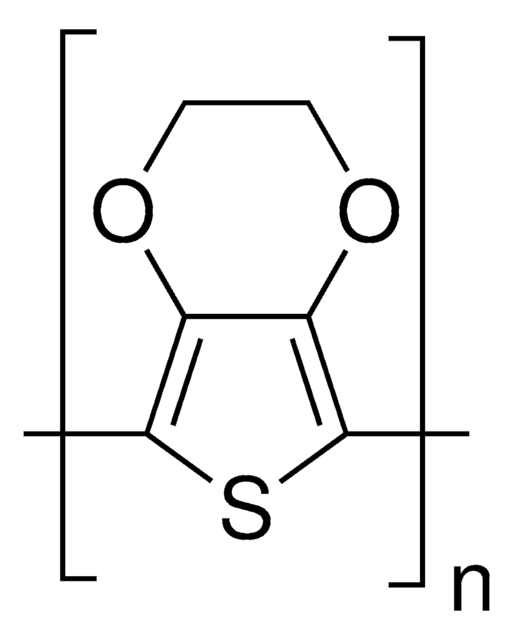577030
Polypyrrole
conductivity 10-50 S/cm (pressed pellet)
Synonym(s):
PPy
About This Item
Recommended Products
form
solid
Quality Level
contains
proprietary organic sulfonic acid as dopant
greener alternative product characteristics
Design for Energy Efficiency
Learn more about the Principles of Green Chemistry.
sustainability
Greener Alternative Product
solubility
H2O: insoluble
organic solvents: insoluble
greener alternative category
, Enabling
SMILES string
[nH]1cccc1
InChI
1S/C4H5N/c1-2-4-5-3-1/h1-5H
InChI key
KAESVJOAVNADME-UHFFFAOYSA-N
Looking for similar products? Visit Product Comparison Guide
General description
PPy may be prepared by a standard electrochemical technique. It may also be prepared by reacting -napthalene sulfonic acid (NSA) and ammonium peroxo-disulfate in aqueous medium. The charges on the surfaces can be easily modified by doping the polymer during its synthesis. Solubility and conductivity measurements of PPy doped with camphor sulfonic and dodecyl benzene sulfonic acid have been reported. Lectrosensitivity and lower oxidation potential of PPy make it potentially useful for drug delivery, chemical sensors, batteries, ion selective electrodes, biosensor and biochemistry research.
Application
- electrode materials for sensors used in electrocardiography (ECG)
- formation of electrode material for a variety of energy storage applications
- encapsulation of lithium sulfide (Li2S) as a high performance cathode material
Packaging
Other Notes
Storage Class Code
11 - Combustible Solids
WGK
WGK 3
Flash Point(F)
Not applicable
Flash Point(C)
Not applicable
Personal Protective Equipment
Choose from one of the most recent versions:
Already Own This Product?
Find documentation for the products that you have recently purchased in the Document Library.
Customers Also Viewed
Articles
By altering the physicochemical properties, smart or intelligent drug delivery systems can be designed to deliver therapeutic molecules on-demand. Learn more about the application of stimuli-responsive materials in drug delivery.
The application of conducting polymers at the interface with biology is an exciting new trend in organic electronics research.
While dye sensitization as the basis for color photography has been accepted for a very long time,1 attempts to use this principle for the conversion of solar light to electricity generally had resulted only in very low photocurrents, below 100 nA/cm2.2
Professor Chen (Nankai University, China) and his team explain the strategies behind their recent record-breaking organic solar cells, reaching a power conversion efficiency of 17.3%.
Global Trade Item Number
| SKU | GTIN |
|---|---|
| 577030-25G | 4061833599334 |
| 577030-5G | 4061832628899 |
Our team of scientists has experience in all areas of research including Life Science, Material Science, Chemical Synthesis, Chromatography, Analytical and many others.
Contact Technical Service





